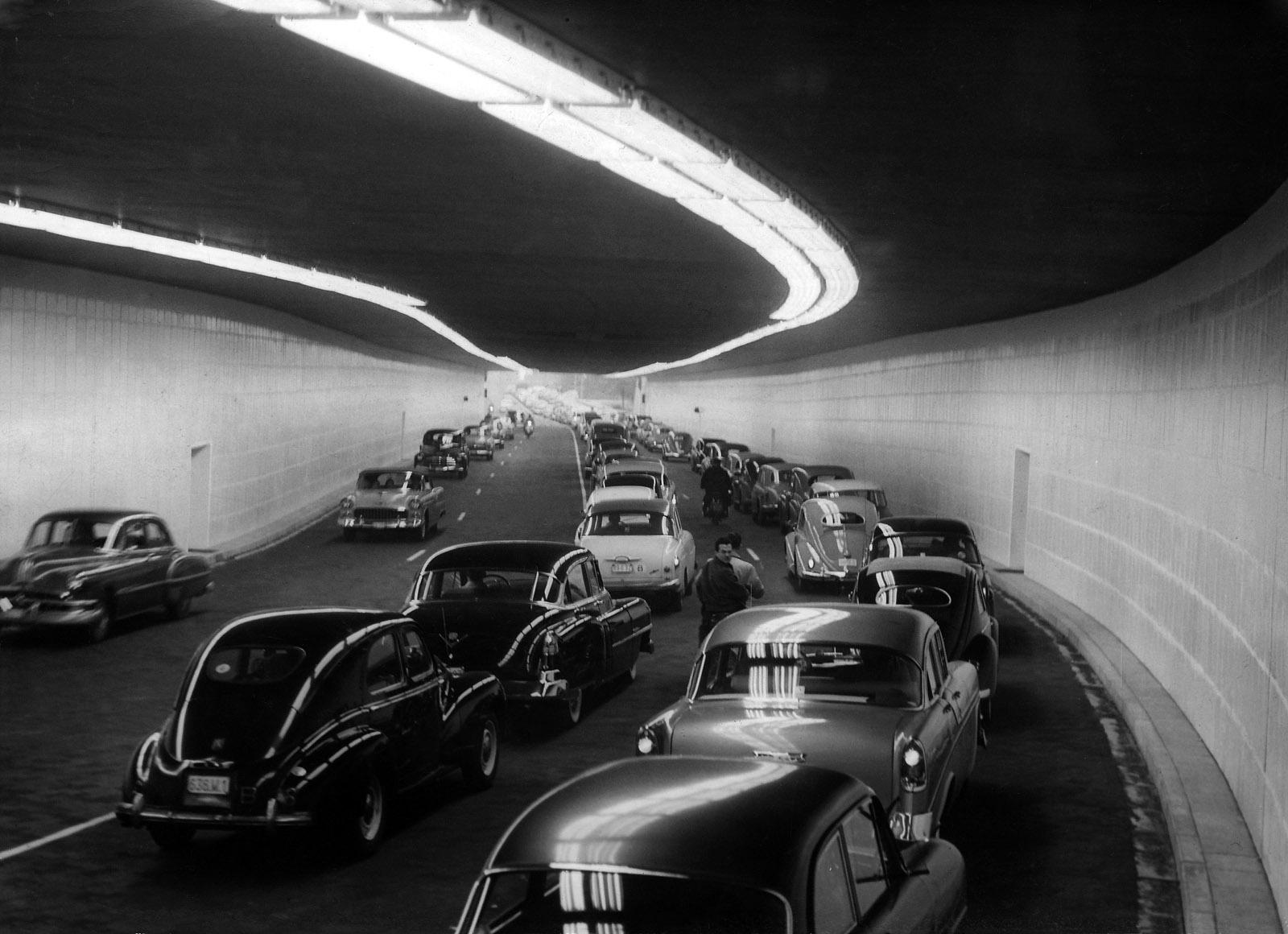The car rules
The Brussels road network is restructured from 1956. Urban motorways, overpasses and tunnels appear in expectation of the Expo 58 and to anticipate the increase of the car population.
The number of cars increases spectacularly. In 1950, 274,000 cars are on the road in the country and in 1962 there are close to a million.




